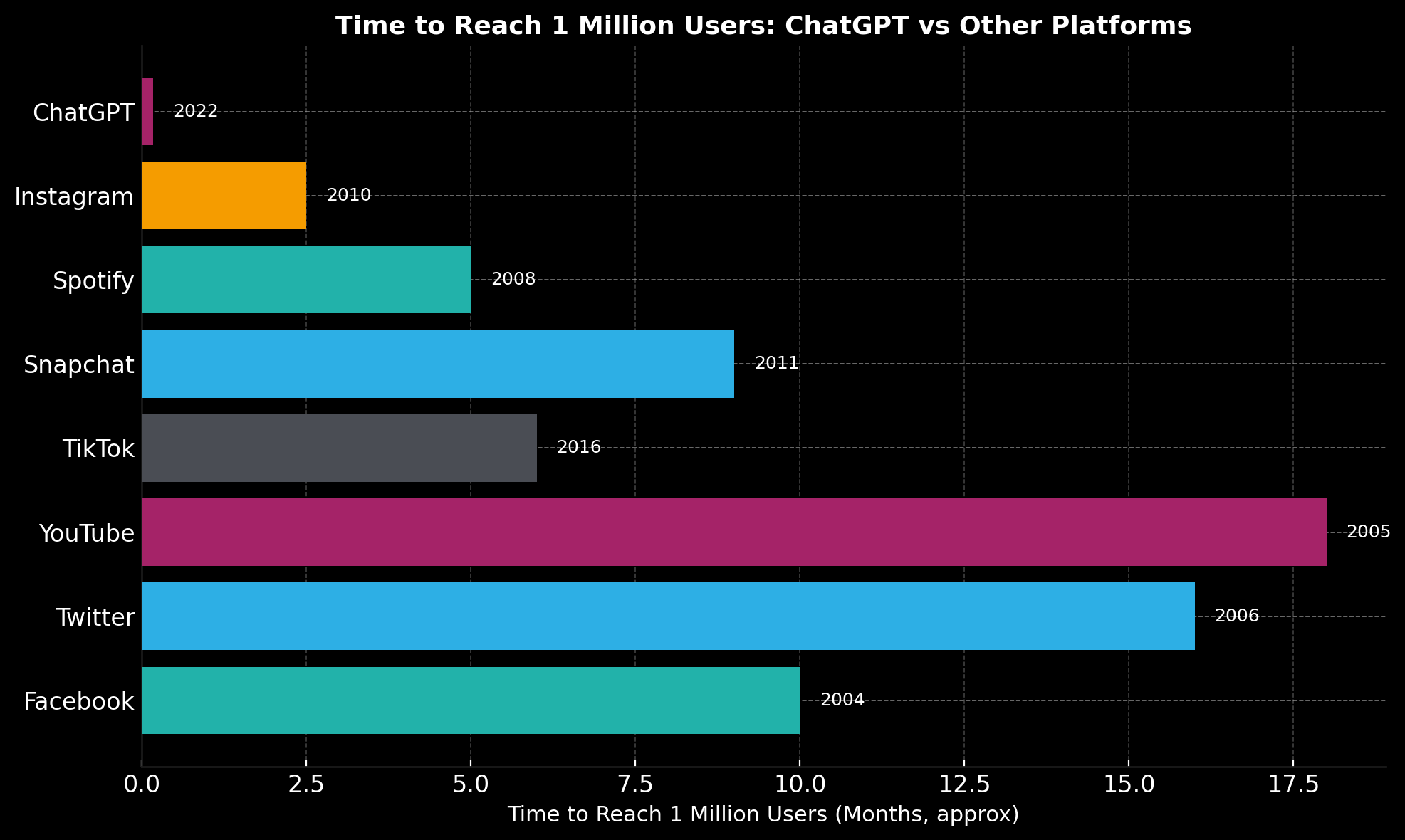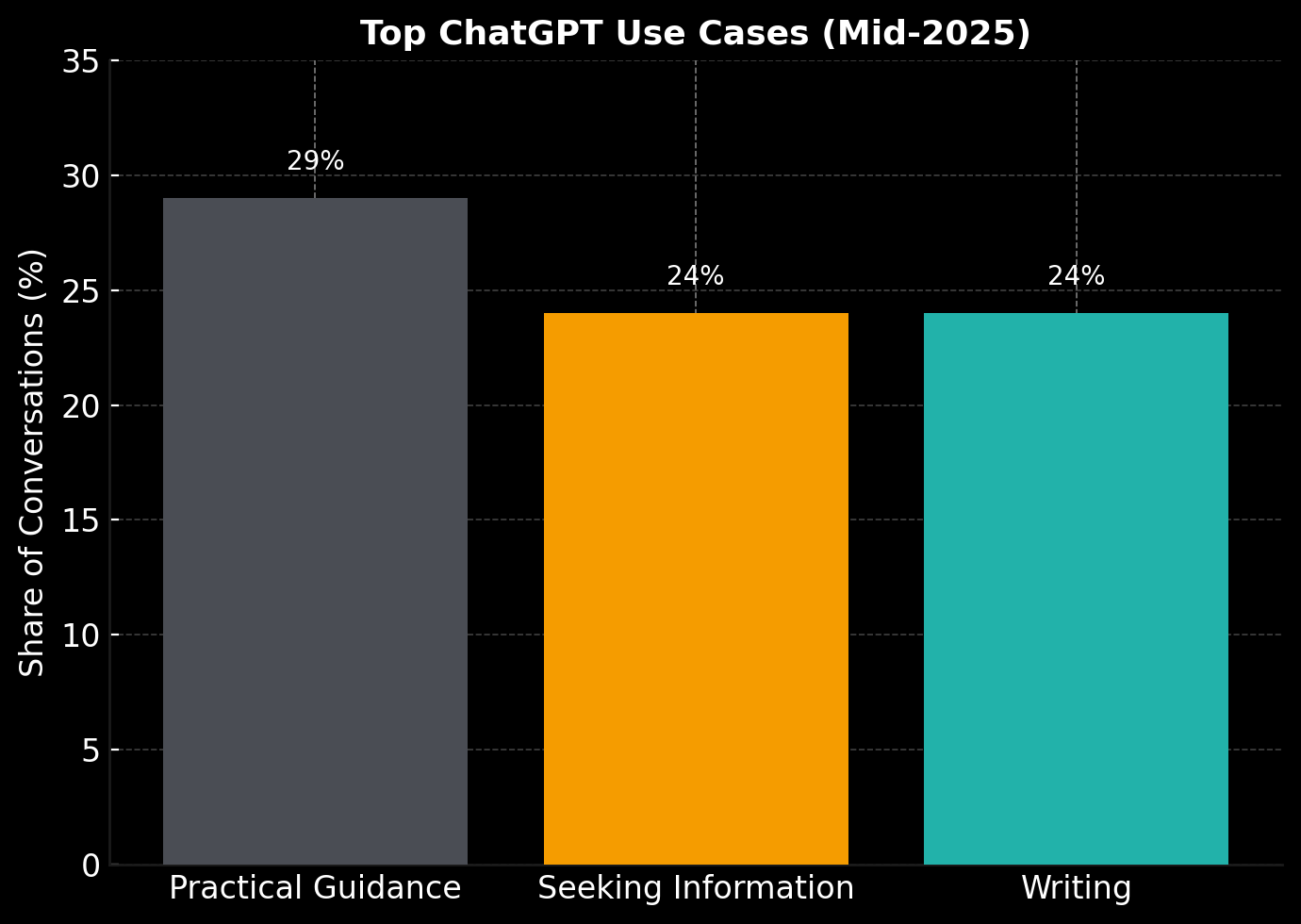A Look at How 700 Million People Use ChatGPT
Date Published
Categories

Since its public release in November 2022, ChatGPT’s adoption has surged at a rapid pace, reaching 1 million users in just five days. By July 2025 (less than 3 years after launch), it was being used weekly by over 700 million people, roughly 10% of the world’s adult population who send more than 2.5 billion messages daily. Even with this explosive growth, there remains little publicly available detail on how people are using the system in practice.

A new working paper released this month by OpenAI on "How People Use ChatGPT," provides the first official look into how it is being used. The results offer a glimpse into the digital habits of a significant portion of the global population. You can find the official document here, but here are some of the key takeaways on who is using ChatGPT and how.
Who is Using ChatGPT?
The study reveals that the demographic profile of ChatGPT users is dynamic and expanding globally:
- The Gender Gap is Closing: While early adopters were disproportionately male (around 80%), this gap has narrowed dramatically. By June 2025, active users with typically feminine first names slightly outnumbered those with typically masculine names, suggesting gender parity in usage has nearly been reached.
- Youth Dominates, but Gaps are Narrowing: Younger users are major contributors to message volume. Nearly half of all messages sent by adults come from users under the age of 26. However, usage has been growing within every age cohort.
- Rapid Growth in Low- and Middle-Income Countries: While initial adoption was highest in wealthy nations, ChatGPT usage has grown significantly faster in low- and middle-income countries over the last year.
- Professionals Use It for Work: Highly educated users and those in professional occupations are substantially more likely to use ChatGPT for work-related tasks. For example, 57% of messages from users in computer-related fields are for work, compared to 40% for non-professional occupations.
How is ChatGPT Being Used?
The research team developed a privacy-preserving method to analyse usage patterns without any human ever viewing the content of user messages. The study classified millions of conversations to understand user intent. The findings provide some valuable insights into AI's primary applications.
Work vs. Play: Non-Work Use is Growing Faster
While much of the economic discussion around AI focuses on workplace productivity, the data shows that non-work-related messages are not only dominant but also growing at a faster rate.
- In June 2024, non-work messages made up 53% of usage.
- By June 2025, that share had climbed to 73%.
This suggests that the economic value of generative AI extends far beyond professional settings, creating significant consumer surplus in areas like home production, education, and personal decision-making.
Top Use Cases: Practical Guidance, Information, and Writing
Three broad categories account for nearly 80% of all ChatGPT conversations:
- Practical Guidance (29%): This is the most common use case and includes things like tutoring, "how-to" advice, and creative brainstorming. Notably, education is a key application, with tutoring and teaching requests making up over 10% of all messages.
- Seeking Information (Grew from 14% to 24% in a year): This category, which is a close substitute for web search, has seen significant growth.
- Writing (24%): This includes drafting emails and documents, as well as editing, summarising, and translating text. Interestingly, about two-thirds of writing tasks involve modifying user-provided text, rather than creating new content from scratch (and yes, ChatGPT did help with the writing of this post – including the images!)

At Work: A Tool for Writing and Decision Support
When people do use ChatGPT for their jobs, writing is the clear leader, accounting for 40% of all work-related messages. This is especially true for those in management and business, where writing tasks make up 52% of work use.
Classifying User Intent
Beyond looking at what topics people use ChatGPT for, the study also classified messages by intent by capturing the purpose behind each interaction:
- Asking: Seeking information or advice (e.g., “What’s the best way to…”).
- Doing: Requests to produce or modify output (e.g., “Draft an email…” or “Edit this text…”).
- Expressing: Sharing views or feelings without seeking to act or learn (e.g., chatting, venting, or reflection).
The distribution of these categories highlights how people are engaging with the tool:
- By mid-2025, around 49% of messages were Asking, 40% were Doing, and 11% were Expressing.
- When it comes to work-related use, the balance shifts, with Doing tasks accounting for about 56% of activity, with Asking taking a smaller share.
This framework demonstrates that ChatGPT isn’t only being used to find information, but also to perform tasks and deliver outputs, particularly in professional settings.
Summary
What the study shows is that ChatGPT has quickly evolved from a curiosity into a global utility. People aren’t just asking questions; they are using it to generate work, refine ideas, and express themselves. What began as a tool for information is increasingly becoming an assistant in creation and decision-making, embedded in both professional and personal routines. As adoption deepens across every demographic and geography, the real question is no longer if generative AI will reshape how we work and live, but where its influence will be felt most.

Sanjay Dandeker
Principal Consultant